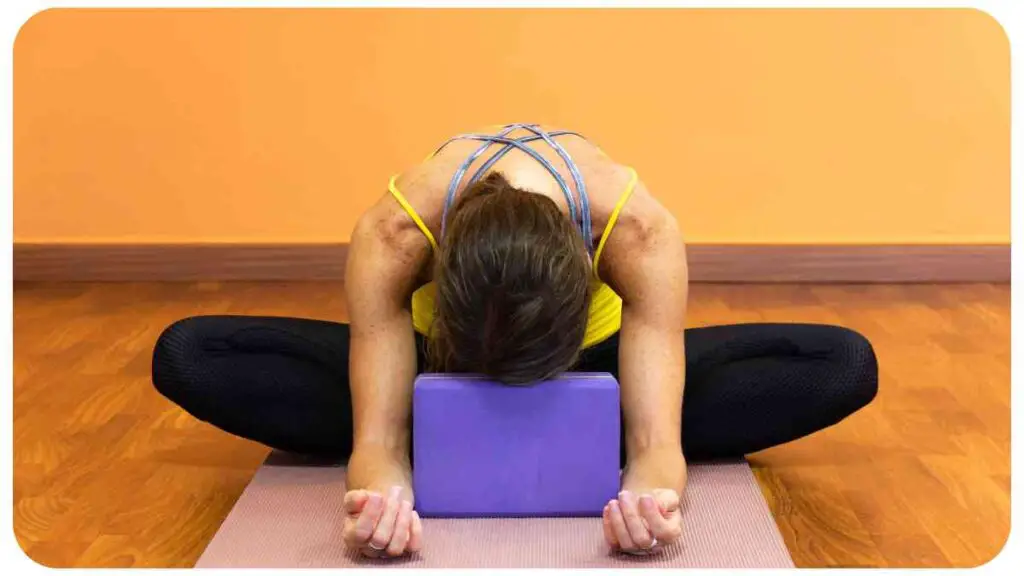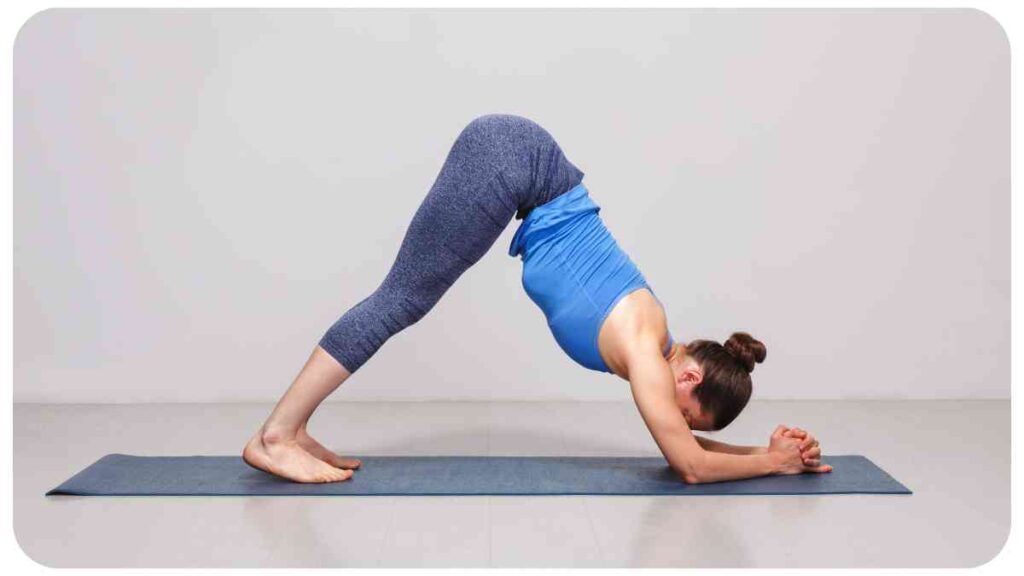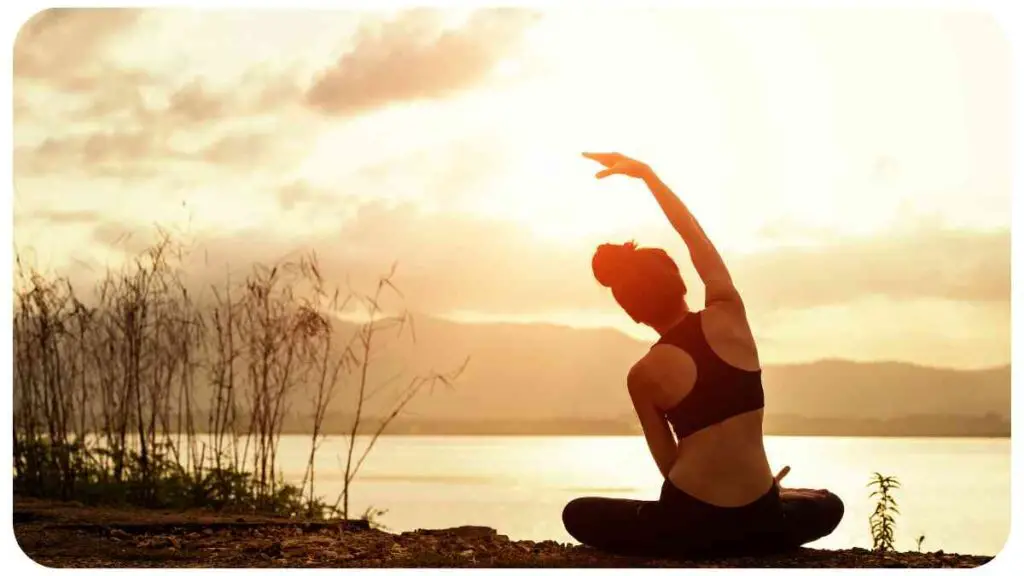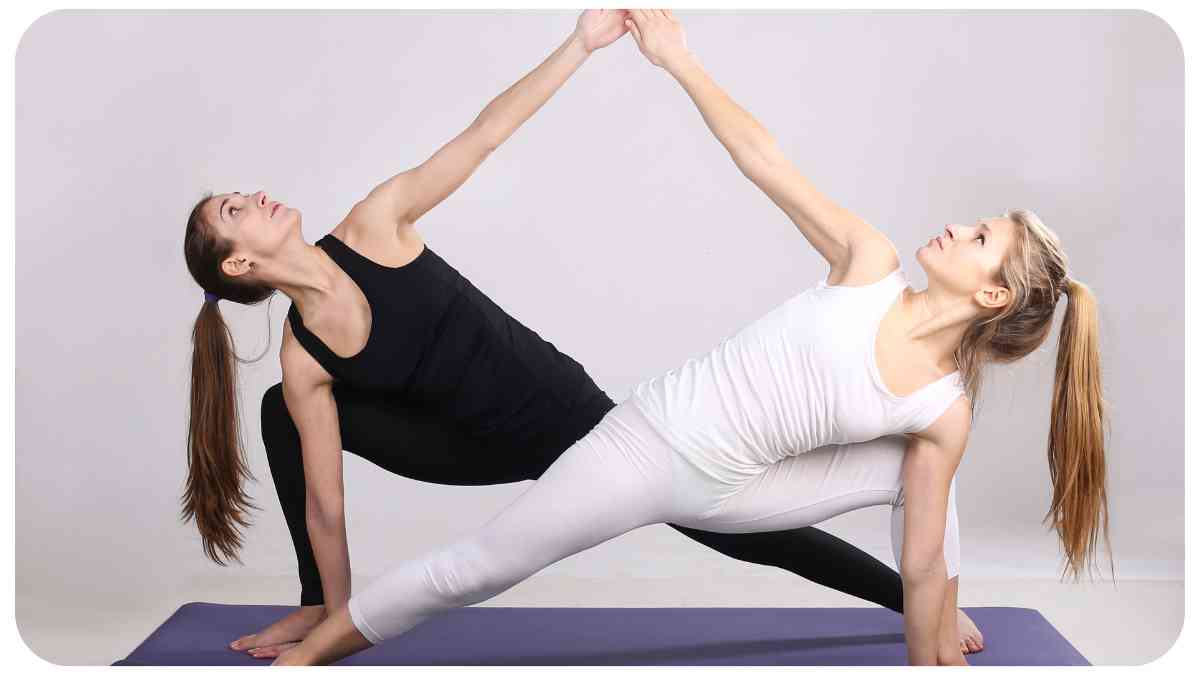In the world of yoga, there are numerous styles and practices to choose from, each offering its own unique benefits and experiences. Two popular styles that often pique the interest of practitioners are Yin Yoga and Hatha Yoga.
While both have their merits, understanding the differences and similarities between them can help you determine whether you really need to incorporate both into your yoga routine.
| Yin Yoga | Hatha Yoga |
|---|---|
| Gentle and meditative | Varies in intensity and pace |
| Emphasizes deep stretching and relaxation | Focuses on balance and breath control |
| Targets deep connective tissues | Enhances flexibility, strength, balance |
| Holds poses for longer durations | Involves flowing from one pose to another |
| Cultivates mindfulness and introspection | Promotes mind-body-breath connection |
What is Yin Yoga?

Yin Yoga is a gentle and meditative practice that focuses on long-held poses and stretching the deep connective tissues of the body.
Unlike more active styles of yoga, Yin Yoga emphasizes relaxation and surrender, allowing for a deep release and opening. This style of yoga is an ideal complement to more dynamic practices and can be beneficial for both physical and mental well-being.
Building a strong connection between yoga and spirituality is essential for a meaningful practice. Explore how to tap into the deeper meaning of your yoga practice in our guide on Yoga and Spirituality to discover profound insights and enhance your spiritual journey.
Benefits of Yin Yoga
Practicing Yin Yoga brings about several benefits for the mind, body, and soul. By holding poses for an extended period, typically ranging from 3 to 5 minutes, Yin Yoga promotes flexibility, joint mobility, and increased circulation. It also encourages mindfulness and introspection, allowing practitioners to cultivate a deeper sense of self-awareness and inner stillness.
Yin Yoga Poses
To fully understand the practice, let’s take a closer look at some common Yin Yoga poses:
| Pose | Benefits |
| Child’s Pose | Relaxes the lower back and hips |
| Butterfly Pose | Opens the hips and stretches the inner thighs |
| Forward Fold | Releases tension in the spine and stretches the hamstrings |
| Dragon Pose | Opens the hip flexors and stretches the groin area |
Yin Yoga vs Other Yoga Styles
As mentioned earlier, Yin Yoga possesses distinct qualities that set it apart from other yoga styles. Let’s compare Yin Yoga with another popular style, Hatha Yoga.
Yin Yoga vs Hatha Yoga
| Aspect | Yin Yoga | Hatha Yoga |
| Pace and Intensity | Slow-paced and gentle, focusing on relaxation and deep stretching | Varies; can range from gentle and meditative to vigorous and physically demanding |
| Hold Time | Poses are held for longer durations (3-5 minutes) which allows for a release in the deeper connective tissues of the body | Poses are usually not held for extended periods and may involve flowing from one pose to another |
| Mental Focus | Encourages mindfulness, introspection, and cultivating inner stillness | Emphasizes the balance between mind, body, and breath through asanas (poses), pranayama (breathing), and meditation |
| Energy and Qi Flow | N/A | Regulates the flow of energy (prana) through the body |
What is Hatha Yoga?

Hatha Yoga, often referred to as the foundation of all physical yoga practices, encompasses a wide range of asanas (poses), pranayama (breathing exercises), and meditation techniques.
The core principle of Hatha Yoga revolves around achieving balance between the body, mind, and breath. It aims to harmonize energy and promote overall physical and mental well-being.
To embrace the spiritual benefits of yoga and connect with your higher self, practicing yoga becomes a transformative experience. Dive into the article on The Spiritual Benefits of Yoga to uncover the profound ways yoga helps in personal and spiritual growth.
Benefits of Hatha Yoga
The practice of Hatha Yoga offers numerous benefits for both beginners and seasoned practitioners. Regular practice enhances flexibility, strength, and balance, while also calming the mind and reducing stress. Hatha Yoga serves as a wonderful avenue for self-exploration, self-discipline, and self-improvement.
Hatha Yoga Poses
To familiarize ourselves with Hatha Yoga, let’s explore a few foundational poses:
| Pose | Benefits |
| Mountain Pose | Improves posture, balance, and awareness of the body |
| Downward Dog | Enhances strength, flexibility, and circulation |
| Warrior II | Builds stamina, strengthens the thighs and core, and increases focus |
| Tree Pose | Improves balance, stability, and concentration |
Hatha Yoga vs Other Yoga Styles
Now, let us compare Hatha Yoga with Yin Yoga to see how they differ from one another.
Hatha Yoga vs Yin Yoga
| Aspect | Hatha Yoga | Yin Yoga |
| Pace and Intensity | Varies; can range from gentle and meditative to vigorous and physically demanding | Slow-paced and gentle, focusing on relaxation and deep stretching |
| Hold Time | Poses are usually not held for extended periods and may involve flowing from one pose to another | Poses are held for longer durations (3-5 minutes) which allows for a release in the deeper connective tissues of the body |
| Mental Focus | Emphasizes the balance between mind, body, and breath through asanas (poses), pranayama (breathing), and meditation | Encourages mindfulness, introspection, and cultivating inner stillness |
| Energy and Qi Flow | Regulates the flow of energy (prana) through the body | N/A |
Should You Practice Both Yin Yoga and Hatha Yoga?
While both Yin Yoga and Hatha Yoga offer unique benefits, incorporating both into your yoga routine can provide a well-rounded practice that addresses various aspects of your well-being.
Complementary Nature of Yin and Hatha Yoga
Yin Yoga and Hatha Yoga complement each other in numerous ways. Hatha Yoga focuses on developing strength, flexibility, and balance while working with the energy flow throughout the body. On the other hand, Yin Yoga targets the deep connective tissues and promotes relaxation and release.
By combining the dynamic, active nature of Hatha Yoga with the slow-paced, introspective practice of Yin Yoga, you can experience a comprehensive and balanced yoga practice.
Incorporating yoga into your weight loss journey can yield incredible results for your body and mind. Discover the ultimate guide on Yoga for Weight Loss and learn how to use yoga poses, breathing exercises, and mindfulness techniques to support your weight loss goals while promoting overall well-being.
Incorporating Yin and Hatha Yoga into Your Routine
To get the most out of both styles, it’s recommended to alternate between Yin Yoga and Hatha Yoga sessions throughout the week. Start by evaluating your goals and what your body needs on a particular day.
If you’re feeling energetic and seeking a more invigorating practice, opt for a Hatha Yoga class. On days when you require deep stretching and relaxation, indulge in a Yin Yoga session.
By incorporating both styles, you allow your body to experience a wider range of movements, the benefits of deep stretching, and the calming effects of a meditative practice. This holistic approach ensures that you’re addressing various aspects of your physical, mental, and spiritual well-being.
For those seeking spiritual enlightenment, combining yoga and meditation can lead to remarkable insights and experiences. Learn about the perfect synergy between yoga and meditation in our guide on Yoga and Meditation, and discover the path to spiritual growth through these powerful practices.
A Personal Journey: Yin Yoga and Hatha Yoga in My Life

I’d like to share a personal anecdote about how Yin Yoga and Hatha Yoga have shaped my own wellness journey. As a professional yoga instructor with years of experience, I have witnessed the transformative power of these two styles firsthand.
In the early stages of my yoga practice, I was initially drawn to the dynamic and physically challenging nature of Hatha Yoga. The energizing sequences and deep breathing exercises provided me with a sense of vitality and strength. However, I soon realized the importance of balance and the need to nurture my body on a deeper level.
That’s when I discovered Yin Yoga. Its slower pace and longer pose holds allowed me to delve into a profound sense of release and surrender. Yin Yoga provided the necessary counterbalance to the more active practices. Through Yin Yoga, I learned to cultivate patience, mindfulness, and a deeper connection with my body.
By integrating both Yin Yoga and Hatha Yoga into my routine, I experienced the best of both worlds. Hatha Yoga invigorated me, while Yin Yoga grounded and nurtured me. It was a harmonious dance that kept my body and mind in equilibrium.
Unlock the secrets to a stronger and more flexible body with the transformative power of yoga. Check out our comprehensive guide on Unlocking the Secret to a Stronger and More Flexible Body with Yoga to explore various yoga poses, techniques, and principles that can help you attain physical strength and flexibility.
Conclusion
In conclusion, the question of whether you need both Yin Yoga and Hatha Yoga depends on your individual goals and preferences. While each style has its own unique benefits and qualities, combining them can lead to a well-rounded practice that encompasses strength, flexibility, balance, relaxation, and mindfulness.
By incorporating Yin Yoga and Hatha Yoga into your routine, you open yourself up to a wider range of possibilities and experiences. Embrace the dynamic and active nature of Hatha Yoga, and allow the introspective and meditative qualities of Yin Yoga to bring balance and serenity to your practice.
Remember, the essence of yoga lies in listening to your body, honoring its needs, and cultivating a sense of harmony. So, why choose between Yin Yoga and Hatha Yoga when you can have the best of both worlds? Embrace the duality and embark on a journey that nurtures your body, mind, and soul.
Further Reading
For more information on the differences between Yin Yoga and Hatha Yoga, check out the following resources:
Yin Yoga vs Hatha Yoga: What’s the Difference?: This article provides a detailed comparison of Yin Yoga and Hatha Yoga, outlining their unique characteristics and benefits.
Yin Yoga vs Hatha: Which One Will Suit You Best?: Discover the distinctions between Yin Yoga and Hatha Yoga in this comprehensive guide, including insights into their philosophy, practice, and impact on body and mind.
Differences Between Yin and Hatha Yoga: Dive deeper into the contrasting aspects of Yin Yoga and Hatha Yoga with this informative article that explores their approaches, benefits, and suitable practitioners.
FAQs
What are the main differences between Yin Yoga and Hatha Yoga?
Yin Yoga and Hatha Yoga differ in several key aspects. While Yin Yoga focuses on passive stretching and longer pose holds to target the deep connective tissues, Hatha Yoga incorporates a broader range of poses and emphasizes balance between mind, body, and breath.
Can I practice Yin Yoga and Hatha Yoga on the same day?
Yes, you can practice Yin Yoga and Hatha Yoga on the same day. It’s crucial to listen to your body and ensure you have enough energy for both practices. Consider alternating between the two or allocating separate sessions to fully embrace the unique qualities of each style.
Which practice is more suitable for beginners, Yin Yoga or Hatha Yoga?
Both Yin Yoga and Hatha Yoga can be practiced by beginners. However, Hatha Yoga might be more accessible initially, as it offers a broader range of poses and varying intensity levels, allowing practitioners to adapt to their individual needs and capabilities.
How often should I practice Yin Yoga and Hatha Yoga?
The frequency of your Yin Yoga and Hatha Yoga practice depends on your personal goals, schedule, and preferences. It’s recommended to practice each style at least a couple of times a week to experience their benefits. Experiment with different frequencies and listen to your body to find the right balance for you.
Can Yin Yoga and Hatha Yoga be combined with other yoga styles?
Absolutely! Yin Yoga and Hatha Yoga can be combined with other yoga styles to create a well-rounded practice. Many practitioners find that incorporating multiple styles helps them achieve a balanced and holistic experience, catering to different aspects of their well-being. Explore and experiment with different combinations to find what works best for you.

Hello, my name is Hellen James! I am a yoga teacher and writer who loves to share information about how you can achieve a more fulfilling life. I have been practicing mindfulness, yoga, and meditation for over 10 years. My passion for these practices has led me to teach them to others.

